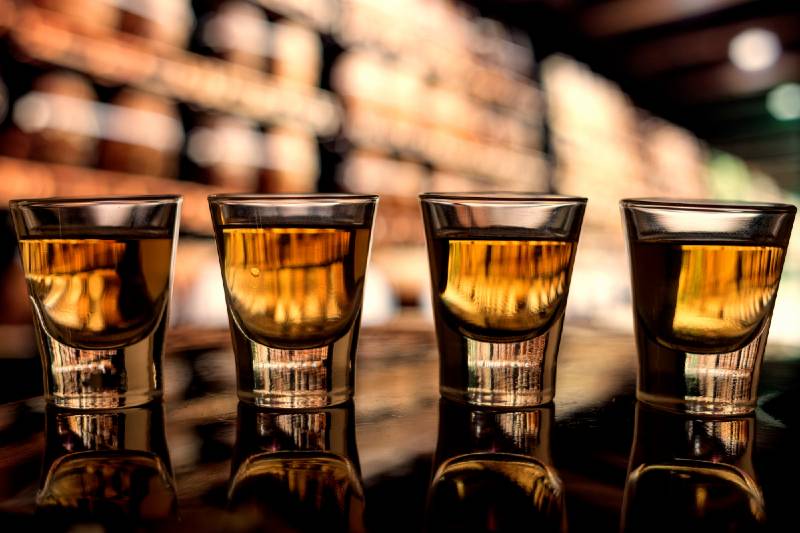The Demand For Aged Tequila and the Industry’s Current Situation
It goes without saying that agave spirits in general—namely, Tequila and Mezcal—are the most consumed spirits throughout all of Mexico. However, over the years, Tequila especially has increased in its popularity throughout the world, but mostly in the United States.
In 2020 alone, Tequila sales grew over 54% in revenue and 38% by volume, outperforming all the other liquors in the Spirit’s industry. Part of the reason for this Tequila boom is the expanding means of education and variety regarding the spirit, which has, in turn, increased the appreciation for the more high-quality and aged Tequilas.
With the increased appreciation and sales, the usual cycle of boom pricing in the agave industry has also risen to the occasion. According to Reuters, the agave plant’s pricing has gone up six times within the past two years, giving Tequila distilleries a real run for their money.
From the outside looking in, it would seem that the Tequila industry is excelling. However, it’s not the sales that are suffering—it’s the very existence of the blue agave tequilana weber (the ultimate source of tequila), the one that’s suffering.

Big Demand, High Sales, No Agave?
Several sources have reported that they’ve run out of Añejo Tequila to sell into the marketplace. Back in 2016, the demand for Añejo Tequila only accounted for up to 10% of the total Tequila industry’s demand. Since then, the demand for Añejo Tequila has grown to well over 30%.
This past year alone saw an incredibly high demand for popular brands including Don Julio 1942, Patrón Extra Añejo, and Clase Azul Añejo—leading them to sell out almost completely of their Extra Añejo reserves.
Additionally, agave prices since 2016 have gone up from just under 8 pesos per kilo to 32 pesos per kilo—and that’s for premium agave that is grown for a minimum of six years.
These rising prices also affect the amount of capital it takes to make Tequila in general. At an average of 30 pesos per kilo, a single oven load, or batch, is costing manufacturers around $40,000 US. And that’s just for the non-organic agave.
Moreover, to create an Añejo Tequila, the distilled blue agave is aged between one and three years in oak barrels, with the Extra Añejos surpassing that time by a minimum of one year.
This means that Tequila manufacturers have been facing quite a dilemma over the past five years and counting—especially those working for Tequila private brands. That dilemma is to either allow their Tequilas to age in barrels to continue providing Añejos and Extra Añejos hoping for production prices to drop or to cut their losses and focus on putting out Blancos and Reposados.
Of course, this also means that the industry’s current situation is that the increasing demand for Añejos and Extra Añejos has left most manufacturers without Añejo reserves. And, by settling for Blancos and Reposados, they’re also settling for less of a return on their initial investment.
The Future of Añejo Tequila
A large part of the Tequila boom was due to the pandemic closing down the bars, clubs, and restaurants where Añejo Tequilas were mostly consumed.
While stuck indoors, many consumers found that they were able to get their hands on these Tequilas at their local liquor stores or online liquor stores—for the same price or less than what they would spend on an entire night out.
Now, in terms of production, many companies are forecasting a decade’s worth of challenging years ahead for the industry as manufacturers are facing an overall agave shortage thanks to this high demand.
While most companies are uncertain of what the future holds, we don’t have to worry about running out of Tequila completely just yet. While many big-name brands have become depleted of their Añejo reserves, the smaller companies like Fortaleza, Suerte, Casa Noble, Maestros Tequileros, and even Casamigos still have their own aging barrels waiting.
It’s hard to say when and if the agave industry will get back on its feet, especially when it comes to crafting Añejo and Extra Añejo Tequilas. However, for now, both individual consumers and Tequila retailers can use this as an opportunity to explore new Tequila private label brands as well as Mezcals and other agave spirits.
The same goes for getting used to sipping on Blancos and Reposados. The smoother aged Tequilas will eventually make their way back to the shelves—but it’ll be at a much higher cost.
Don’t let the agave shortage or high prices stop you from creating your own Tequila. Contact us today to learn more about how you can get started in the Tequila industry.




Latest posts